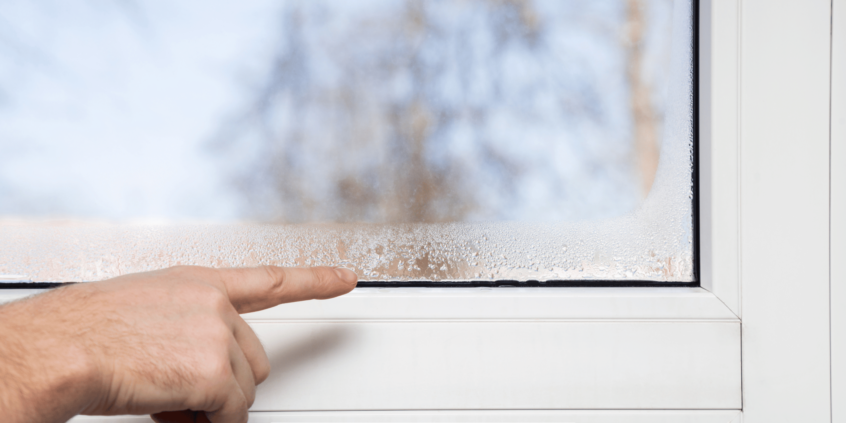Introduction
Indoor relative humidity refers to the amount of moisture in a home. When this is high, you may end up feeling uncomfortable due to the moist atmosphere. Condensation also causes the formation of mold, deterioration of structural elements, and worsening of allergic and asthmatic reactions. Managing indoor humidity entails knowing what leads to it, methods of measuring it, and dehumidification methods as well as moisture control actions to ensure low humidity levels. In this article, you will find valuable recommendations on how to control and prevent high indoor humidity.
What Causes High Indoor Humidity
There are several common causes of elevated relative humidity levels inside homes:

Weather and Climate
The moist air comes in through the open windows and doors, gaps, and crevices. It also travels through walls and the foundation. Residential buildings are more susceptible to moisture penetration particularly in regions that experience high humidity levels.
Daily Activities
Indoor activities such as showering, bathing, cooking, washing clothes, and general cleaning contribute to the emission of water vapor into the indoor air. Moisture-generating activities are more common in large families and result in increased indoor humidity levels.
Structural Issues
Some sources of high indoor moisture include dripping from pipes, water seepage from roofs, the formation of water droplets on cold surfaces, and water accidents. Lack of proper ventilation and insulation also leads to a buildup of moisture.
Inadequate Dehumidification
Central air conditioning systems also eliminate moisture in addition to cooling. Buildings that do not have ACs or have small ones usually lack enough dehumidification capacity. High temperatures and high humidity levels are beyond the capabilities of most systems to eliminate humidity.
It is essential to understand what levels of humidity are present in your indoor environment.
Here are some measurement tips:
1. Use Hygrometers
Affordable digital or analog hygrometers are used to determine the relative humidity level inside buildings. Position them in the living spaces and bedrooms in order to observe.
2. Note Dew Points
One can calculate this absolute moisture measurement by using the dew point calculator online through the indoor temperature and relative humidity. Distinguish between indoor and outdoor dew point. Indoor dew point is higher when there is moisture infiltration to the indoor environment.
3. Observe Condensation
High relative humidity indoors is characterized by condensation on windows and mirrors first thing in the morning. It is also worth mentioning that absence of condensation does not necessarily mean that moisture levels are also low.
4. Be On Alert
Mainly, they should pay attention on hot and humid days especially when it rains or during rainy season. Humidifiers should be operated proactively and maintained below the minimum level and above the unhealthy level of 60% relative humidity.
Ideal Indoor Humidity Levels
Here are guidelines for ideal humidity levels indoors from leading health organizations:
– 30% to 50%: Mold and dust mites preferred conditions and using the EPA and American Lung Association’s optimal relative humidity for mold and dust mite growth. The minimum optimal comfort for personal use of respiratory protection equipment is between 40% and 50%.

– Below 30%: This may lead to skin dryness, throat and sinus irritation during winter since the arid outdoor air is arid.
– Above 60%: Molds and bacteria proliferate; dust mites and other allergens multiply. Viruses have a longer lifespan making infection rates higher.
Strategies for the Control of Indoor Humidity
Use these key strategies to lower elevated moisture levels indoors:
Dehumidifiers
Portable or whole-house dehumidifiers help to take out significant water from the air. Area classifications for the square footage requirements of the conditioned areas. Empty water reservoirs frequently.
Ventilation
A kitchen and bathroom exhaust fan help expel water vapor in the air before it enters the rest of the house. Replace the fans with high efficiency and low noise for whole house ventilation.
Air Conditioning
An appropriately sized air conditioning unit that is well maintained will help reduce humidity levels when cooling the room. Setting the home cooling system to Auto ensures that it continues to function as a humidity controller.
Drying Areas
Avoid using hangers to hang washed clothes inside to dry, instead, use drying racks. Vent clothes dryers outdoors. It is recommended to refrain from air-drying dishware on the sink.
Humidity-Resistant Building Materials
Anti-condensation paints and sealers prevent moisture from seeping in and forming a pool on walls and ceiling.
Smart Habits
Conduct water management practices such as leaving bathroom fans on, covering swimming pools and spas, exhausting cooking steam to the exterior and minimizing indoor plants.
Monitor Progress
Keep monitoring the humidity gauges daily and modifying your control measures until you get consistent readings of between 30% and 50%. It is advisable to conduct humidity spot check during rainy periods or seasons to refine the mitigation measures over time.
Calling In Professionals
Where moisture problems originate from structural concerns, leakage or inadequate insulation, it is advisable to consult professionals to determine and address issues which contribute humidity to living areas.
Conclusion
Maintaining good humidity levels inside the house enhances home comfort and IAQ for better health of the family members. Using hygrometers, being regular with dehumidification equipment, proper ventilation of water vapor, and reducing sources of moisture assists in humidity control even where conditions are hot and humid. Adopting innovative household practices also helps avoid high relative humidity levels indoors, should they be accidentally achieved.

